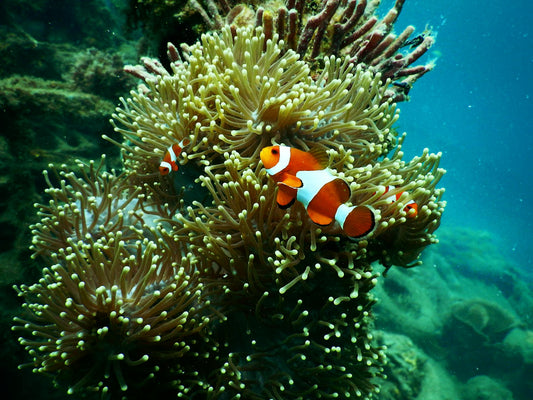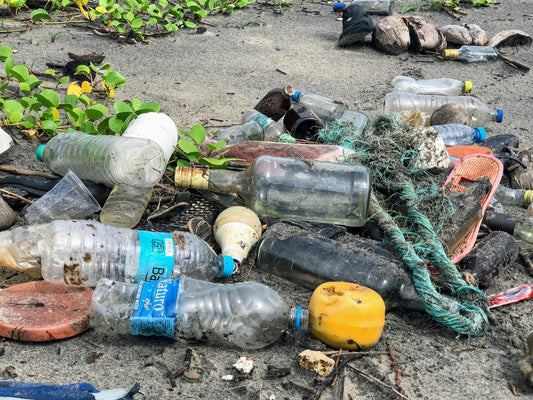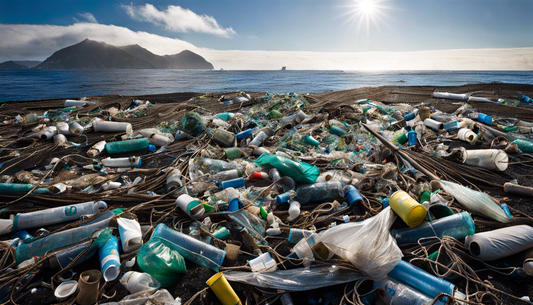Share
Sydney Sewerage System: A Microplastic Factory?
Sydney's sewerage system is not merely an outlet for human waste. Unbeknownst to many, billions of microplastics are also being discharged, causing pollution in the ocean. A 2020 report from the Commonwealth Scientific and Industrial Research Organisation (CSIRO), which only gained media attention recently, revealed some staggering figures - the wastewater treatment plant at Malabar dispersed between 5.4 billion to 120 billion microplastic particles into the sea daily.
Note the Difference: Malabar Vs Cronulla
In comparison, the Cronulla plant, utilizing advanced sewage treatment techniques, emitted a lesser number of particles daily (estimated to be about 86 million to 350 million). On a lighter note, despite Sydney Water's plans to upgrade the city's sewerage system with an investment of about $32bn, the treatment plants at Malabar, Bondi, and North Head will be bypassed.
The Oceanic Fatbergs Mystery
These plants are suspected to be the offenders behind the mysterious appearance of thousands of waste balls or "fatbergs" on the shores over the last six months. The waste balls primarily consisted of human-generated waste such as grease and fecal matter, added the Environment Protection Authority (EPA) of New South Wales.
Tackling the Microplastic Monster
Plastic pieces that are shorter than 5mm, also known as microplastics, have been identified by the CSIRO report as a "significant" source of oceanic pollution. Evidently, these minuscule pieces could cause "physical damage" to marine life. These findings point to the necessity of exploring advanced wastewater treatment options, opined Dr. Scott Wilson, the research director at the Australian Microplastic Assessment Project.
A Sign of Hope: Reduction in Plastic Litter
There is some good news too! Citing the example of bans on single-use plastic items like plastic bags and straws executed by the NSW government, the EPA spokesperson conveyed that such actions have resulted in a 54% decrease in plastic litter since 2018. It just goes to show that collectively, we can make a significant positive impact on our precious environment.
Sydney's sewerage system is not merely an outlet for human waste. Unbeknownst to many, billions of microplastics are also being discharged, causing pollution in the ocean. A 2020 report from the Commonwealth Scientific and Industrial Research Organisation (CSIRO), which only gained media attention recently, revealed some staggering figures - the wastewater treatment plant at Malabar dispersed between 5.4 billion to 120 billion microplastic particles into the sea daily.
Note the Difference: Malabar Vs Cronulla
In comparison, the Cronulla plant, utilizing advanced sewage treatment techniques, emitted a lesser number of particles daily (estimated to be about 86 million to 350 million). On a lighter note, despite Sydney Water's plans to upgrade the city's sewerage system with an investment of about $32bn, the treatment plants at Malabar, Bondi, and North Head will be bypassed.
The Oceanic Fatbergs Mystery
These plants are suspected to be the offenders behind the mysterious appearance of thousands of waste balls or "fatbergs" on the shores over the last six months. The waste balls primarily consisted of human-generated waste such as grease and fecal matter, added the Environment Protection Authority (EPA) of New South Wales.
Tackling the Microplastic Monster
Plastic pieces that are shorter than 5mm, also known as microplastics, have been identified by the CSIRO report as a "significant" source of oceanic pollution. Evidently, these minuscule pieces could cause "physical damage" to marine life. These findings point to the necessity of exploring advanced wastewater treatment options, opined Dr. Scott Wilson, the research director at the Australian Microplastic Assessment Project.
A Sign of Hope: Reduction in Plastic Litter
There is some good news too! Citing the example of bans on single-use plastic items like plastic bags and straws executed by the NSW government, the EPA spokesperson conveyed that such actions have resulted in a 54% decrease in plastic litter since 2018. It just goes to show that collectively, we can make a significant positive impact on our precious environment.
We hope you enjoyed this article. Please feel free to leave a comment below if you want to engage in the discussion.
If you want to read more like this, make sure to check out our Blog and follow us on Instagram. If you are interested in truly sustainable products, check out our Shop.
Check out the original source here.








